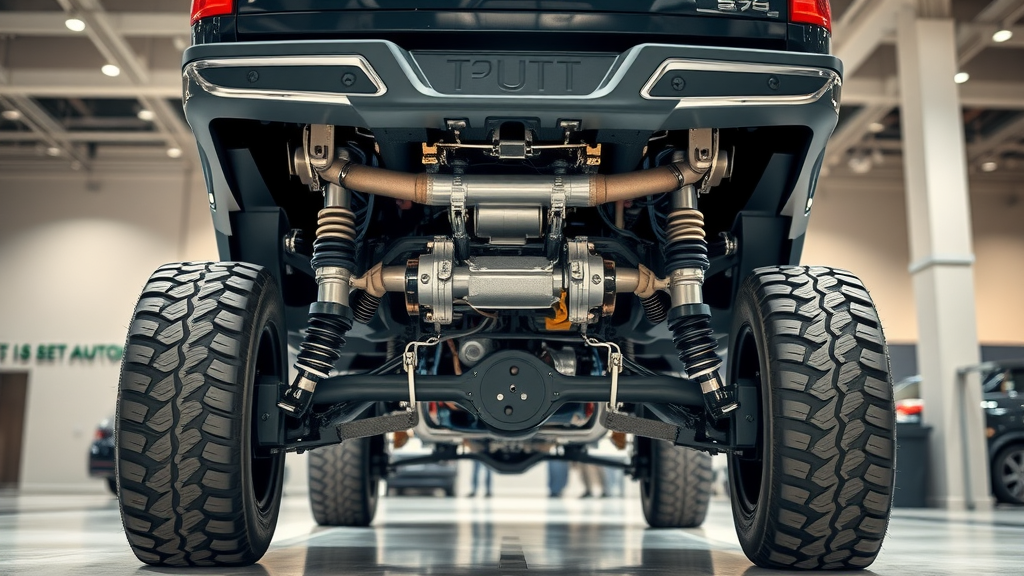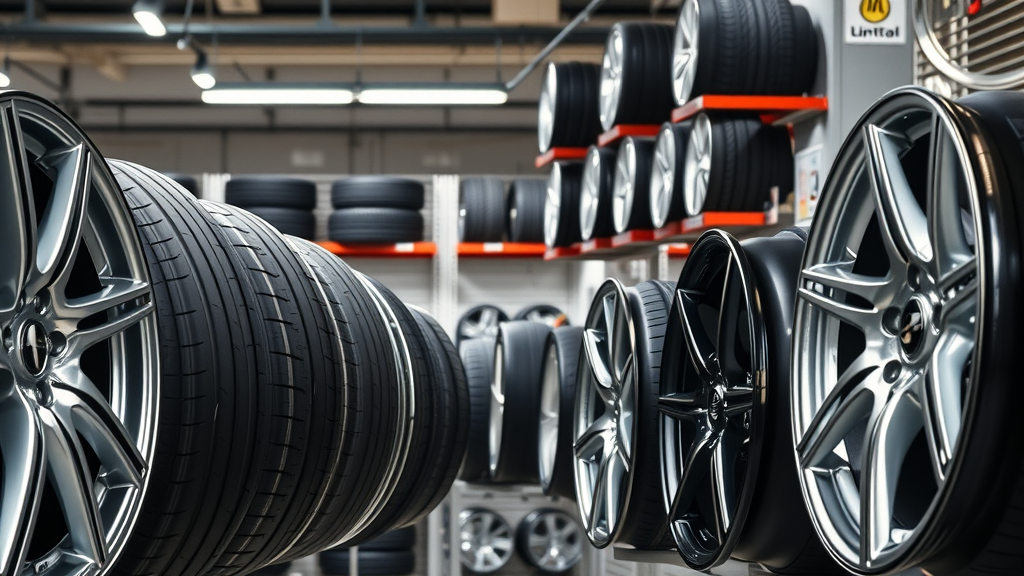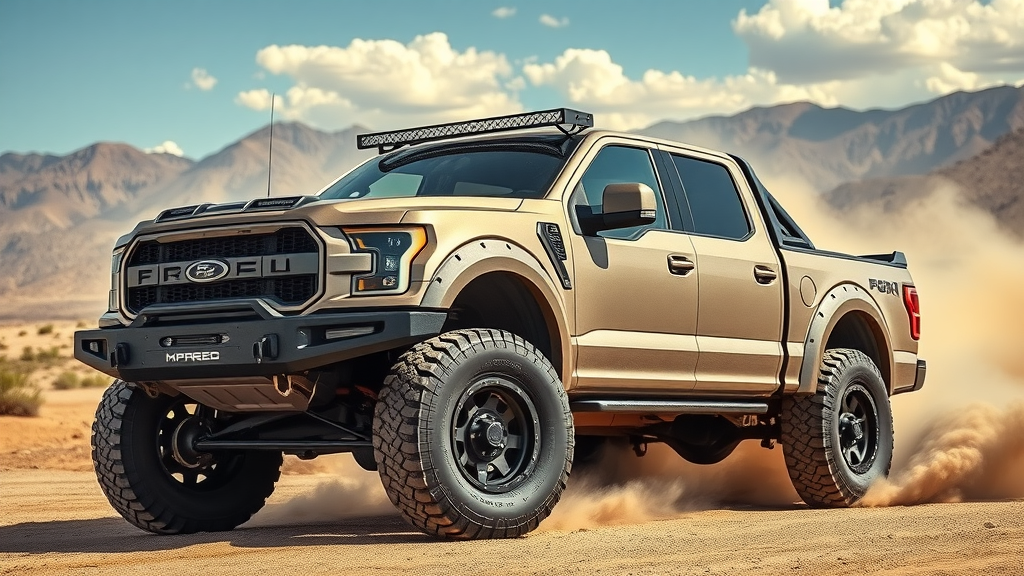Are Your Lift Kits and Aftermarket Wheels Truly Covered by Your Extended Service Contract? Many vehicle owners customize their trucks and SUVs with lift kits and aftermarket wheels to enhance appearance and performance—but do their extended service contracts actually cover these modifications? This comprehensive guide dives into the truth behind lift kit coverage , demystifying warranty concerns and showcasing how the latest service contracts protect your investment even with substantial modifications.
What You'll Learn
- Understanding lift kit coverage in extended service contracts
- How aftermarket wheels and tires affect warranty coverage
- Common misconceptions about lift kit voids and warranty claims
- Expert insights from Mark May of Advantage Warranty Group
- Best practices for installing and protecting your suspension lift kit
- How integration with dealer management systems enhances coverage and sales
Overview of Lift Kit Coverage in Extended Service Contracts
Mark May, of Advantage Warranty Group, explains, "We cover all vehicles regardless of lift kits up to 12 inches, including aftermarket wheels and tires, as long as they meet OEM specifications and price guidelines."
Defining Lift Kits and Suspension Lift Kits
Lift kits are aftermarket modifications designed to raise a vehicle's ride height, often improving off-road capability and giving trucks and SUVs a more commanding presence on the road. Suspension lift kits specifically modify the vehicle's suspension components—such as shocks, springs, and control arms—to increase ground clearance while maintaining driveability and safety.
These kits can vary in height, complexity, and impact on the drivetrain and vehicle handling. Understanding these modifications is critical when considering extended service contract coverage. Modifications up to 12 inches in lift height are generally recognized within modern coverage plans, ensuring owners do not lose protection under warranty terms simply because of their customization choices.

Image: Sleek lifted pickup truck displaying the undercarriage and suspension parts, confident stance, photorealistic high fidelity lifelike, clean auto show background with subtle lighting, highly detailed metallic components and rugged tires, slight motion blur for effect, sharp metallic tones, soft ambient lighting, shot with a 24mm camera lens.
Importance of Lift Kit Coverage in Warranty Plans
Vehicle warranties and extended service contracts typically outline coverage limits tied closely to factory specifications. Historically, installing a lift kit often caused concerns about warranty voidance or denial of claims related to suspension and drivetrain components. This situation left many truck and SUV enthusiasts hesitant to customize.
Today, comprehensive extended service contracts acknowledge the popularity and inevitability of modifications like lift kits. The inclusion of lift kit coverage up to 12 inches protects vehicle owners from costly repairs related to their aftermarket suspension upgrades. Such coverage provides peace of mind, allowing drivers to customize freely without fearing the loss of critical warranty protections—invaluable for maintaining the vehicle’s value and functionality over time.
How Lift Kits Affect Vehicle Warranty Coverage
While factory warranties generally exclude coverage for modifications that alter vehicle design, extended service contracts have evolved to bridge this gap. Lift kits impact numerous vehicle systems including drivetrains, suspension geometry, and wheel alignment. This increased stress can accelerate wear or cause failures not covered by original warranties.
By explicitly including lift kit coverage in their terms, many extended service contracts mitigate the risk of warranty denial. They recognize that modifications are part of modern vehicle ownership, especially for trucks configured for off-road or performance use. This approach benefits both dealers and customers by reducing disputes and facilitating smoother claims processing when issues arise.
Installing a Lift Kit: What You Need to Know About Warranty Coverage
Common Concerns About Lift Kit Void and Kit Void Clauses
There has long been a misconception that installing a lift kit automatically voids a vehicle’s warranty. Many vehicle owners worry that even minor modifications could exclude them from service contracts or lead to claim denials. However, this is not always the case if your extended service contract explicitly covers lift kits up to a stated height.
Understanding the specifics of your service contract's terms—especially clauses related to kit voids—is essential to avoid surprises. Engage with your provider or dealership about what modifications are permissible. Some contracts require that aftermarket parts meet OEM-equivalent standards or price guidelines, helping prevent abuse and ensuring parts safety and compatibility.

Image: Concerned car owner discussing warranty documentation with a dealership advisor, engaged expressions, pointing at paperwork, photorealistic high fidelity lifelike, modern dealership office with glass walls, detailed desk items and subtle vehicle branding visible, soft natural colors, warm indirect lighting, shot with a 50mm camera lens.
How Extended Service Contracts Address Lift Kit Modifications
According to Mark May, "We no longer deny claims due to diesel deletions or lift kits, which is a game changer for independent dealers and customers alike."
Extended service contracts have expanded coverage to recognize the realities of vehicle modifications common among enthusiasts. Mark May, of Advantage Warranty Group, emphasizes that rejection of claims based purely on intake of modifications such as lift kits or diesel engine deletions is now a practice of the past. This shift dramatically increases accessibility of coverage for independent dealerships and reassures customers that their investments are protected.
The critical aspect is ensuring lift kits meet height restrictions (often up to 12") and wheels and tires conform with OEM standards. This adjustment reflects a customer-first philosophy where service contracts adapt to market demands rather than force customers into a restrictive mold.
Aftermarket Wheels and Tires: Coverage and Considerations
Difference Between OEM and Aftermarket Wheel Coverage
OEM (Original Equipment Manufacturer) wheels and tires are factory-specified parts designed specifically for a vehicle's make and model. Aftermarket wheels, conversely, can vary widely in design, material, weight, and price.
Extended service contracts now recognize both OEM and permitted aftermarket components within their coverage, provided these parts meet OEM specifications and fall within defined price guidelines. This inclusivity ensures customers who prefer customization are not penalized by losing warranty protections on wheel and tire-related repairs.

Image: Showroom display of various aftermarket and OEM wheels side by side, professional and polished, photorealistic high fidelity lifelike, auto parts store with rows of wheels and tire displays, crisp details, metallic lustre, soft overhead lighting, vibrant chrome and dark black hues, shot with a 35mm camera lens.
How Warranty Coverage Adapts to Various Wheel and Tire Packages
The variability of aftermarket wheels combined with different tire configurations previously posed challenges for warranty providers. However, many extended service contracts today adjust warranty coverage to accommodate a wide array of wheel and tire packages, especially those that complement lift kits and off-road uses.
For example, a lifted truck with a 12-inch lift and aggressive aftermarket wheels can be fully covered if the wheels meet OEM-equivalent standards and the tires are suitable per coverage guidelines. This ensures repairs linked to wheel or tire failure under normal use are claimable, mitigating costly out-of-pocket expenses for owners.

Image: Detailed off-road truck with a 12-inch lift kit and aftermarket wheels, rugged and powerful, photorealistic high fidelity lifelike, desert background with mountains, highly detailed, dynamic dust clouds, vibrant colors, natural sunlight, shot with a 50mm camera lens.
Benefits of Lift Kit Coverage for Independent Dealerships
Integration with Dealer Management Systems (DMS) like Dealer Center
Independent dealerships often face difficulties offering comprehensive products that match those available at franchise stores. The integration of extended service contracts that include lift kit coverage into popular Dealer Management Systems (DMS) such as Dealer Center has revolutionized this space.
This technological integration streamlines the quoting, selling, and claims process, making it easier for dealers to present coverage options to customers upfront. Mark May highlights that integration is a key factor driving high close ratios by providing convenience and ensuring transparent options for customers with lifted or customized vehicles.
How Lift Kit Coverage Enhances Customer Loyalty and Sales
Mark May highlights, "Our integration with Dealer Center has increased our close ratio to 78%, making lift kit coverage accessible and convenient for independent dealers."
Offering lift kit coverage through extended service contracts not only protects customers but also empowers dealers to build loyalty and boost sales. Customers with modified vehicles feel valued and understood when their warranty options reflect their needs, enhancing trust and repeat business.
For independent dealers, this coverage facilitates winning more contracts and retaining customers who might otherwise seek dealerships willing to insure or warranty their customized vehicles. It creates a competitive advantage in a challenging market while supporting profitable back-end products.
Common Misconceptions and FAQs About Lift Kit Coverage
- Does insurance cover a lift kit? Vehicle insurance typically does not cover mechanical failures due to lift kits but covers damage from accidents.
- Does a lifted truck cost more to insure? Insurance costs may increase due to perceived risk, but this varies by provider and policy.
- Does a 2 inch lift void the warranty? Not necessarily; many service contracts cover lifts up to 12 inches as long as terms are met.
- What all is included in a lift kit? Lift kits may include shocks, springs, control arms, spacers, and more—components designed to adjust vehicle height and suspension.
Comparison of Lift Kit Coverage Features Across Popular Extended Service Contracts
| Feature | Advantage Warranty Group | Competitor A | Competitor B |
|---|---|---|---|
| Lift Kit Coverage Up to 12" | ✔ Covered | ✔ Covered up to 6" | ✘ Not Covered |
| Aftermarket Wheel & Tire Coverage | ✔ Allowed if OEM specs met | ✔ Limited coverage | ✘ OEM only |
| Diesel Deletion Claims | ✔ Not denied | ✘ Often denied | ✘ Denied |
| DMS Integration | ✔ Dealer Center Integration | ✘ No DMS integration | ✔ Partial integration |
Actionable Tips for Protecting Your Lifted Truck with Extended Service Contracts
- Verify lift kit height limits in your contract (commonly up to 12 inches covered)
- Ensure aftermarket wheels and tires meet OEM specifications and pricing guidelines to qualify for coverage
- Choose providers with strong integration to dealer systems like Dealer Center for seamless sales and claims experience
- Educate customers on the benefits of extended service contracts tailored for lifted vehicles

Image: Professional mechanic installing a suspension lift kit on a lifted truck, focused and precise, photorealistic high fidelity lifelike, modern garage environment, highly detailed tools and vehicle parts, cool color tones, bright workshop lighting, shot with a 35mm camera lens.
Key Takeaways
- Lift kit coverage up to 12 inches is now commonly included in extended service contracts, offering robust protection for customized vehicles
- Aftermarket wheels and tires are covered if they meet OEM specs and price guidelines, adding flexibility for owners
- Integration with dealer management systems improves the ease of selling and processing claims, benefiting dealers and customers alike
- Extended service contracts help independent dealers build customer loyalty and increase profitability through tailored offerings for lifted vehicles

Image: Happy independent dealership owner shaking hands with a satisfied customer near a lifted truck, positive and welcoming, photorealistic high fidelity lifelike, dealership lot with clear sky, detailed vehicles in the background, energetic body language, sharp vibrant colors, midday sunlight, shot with a 35mm camera lens.
Conclusion: Secure Your Lift Kit Coverage Today
Mark May concludes, "Our mission is to make lift kit coverage easy and accessible, so dealers and customers can enjoy peace of mind without worrying about voided warranties or denied claims."
If you have invested in customizing your truck or SUV with a lift kit and aftermarket wheels, ensuring you have the right extended service contract is crucial to protect your vehicle long-term. With modern plans covering lifts up to 12 inches and inclusive wheel and tire options, you can confidently modify your vehicle without sacrificing warranty protection.
Independent dealers and vehicle owners alike stand to benefit from the evolving landscape that embraces customization while offering robust coverage. Reach out today to learn more about how lift kit coverage can safeguard your ride and enhance your ownership experience.
People Also Ask
- Does insurance cover a lift kit? Insurance typically does not cover mechanical failures caused by lift kits but covers damage from accidents or theft.
- Does a lifted truck cost more to insure? It might, depending on insurer risk assessments, but costs vary widely.
- Does a 2 inch lift void the warranty? Not if your extended service contract includes coverage for lifts up to 12 inches and terms are met.
- What all is included in a lift kit? Common components include shocks, springs, spacers, control arms, and other suspension parts that raise vehicle height.
Call to Action
- For more info call now: (860) 707-9125
 Add Row
Add Row  Add
Add 




Write A Comment